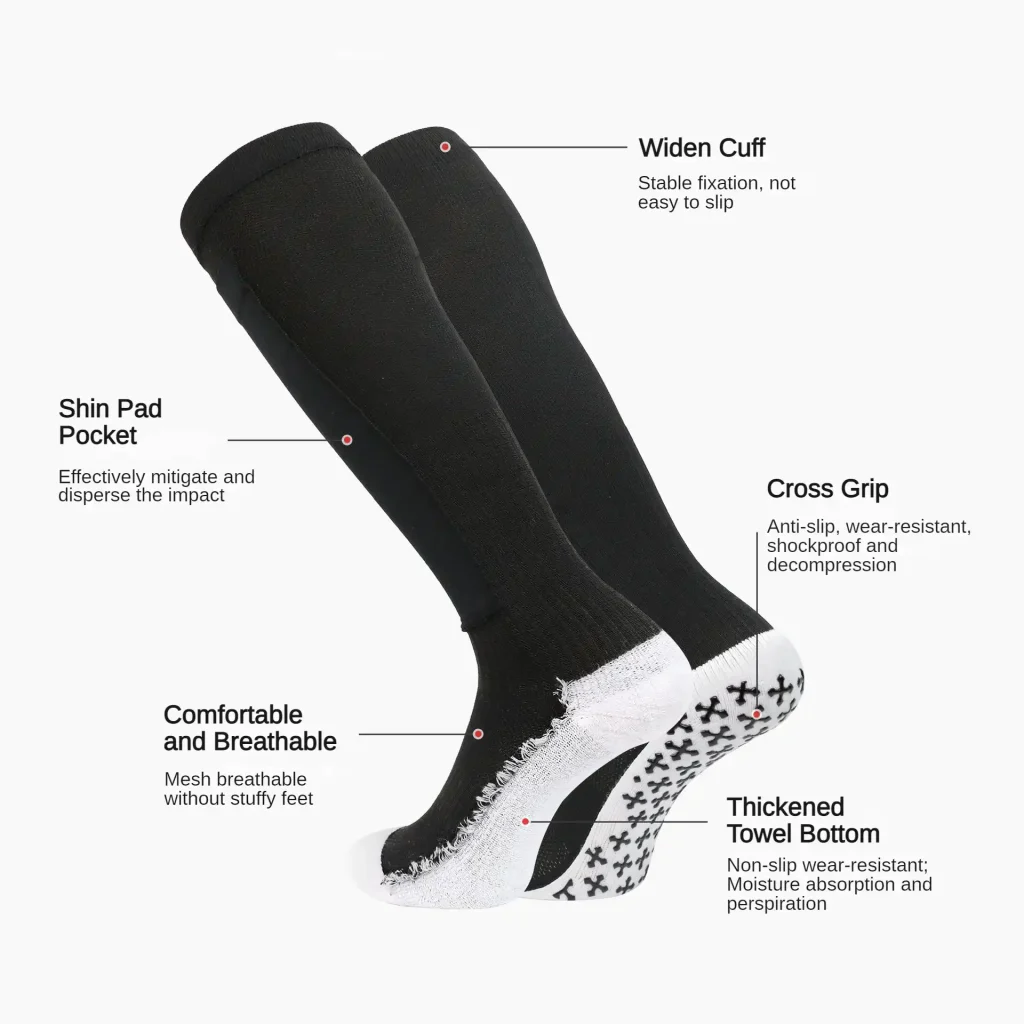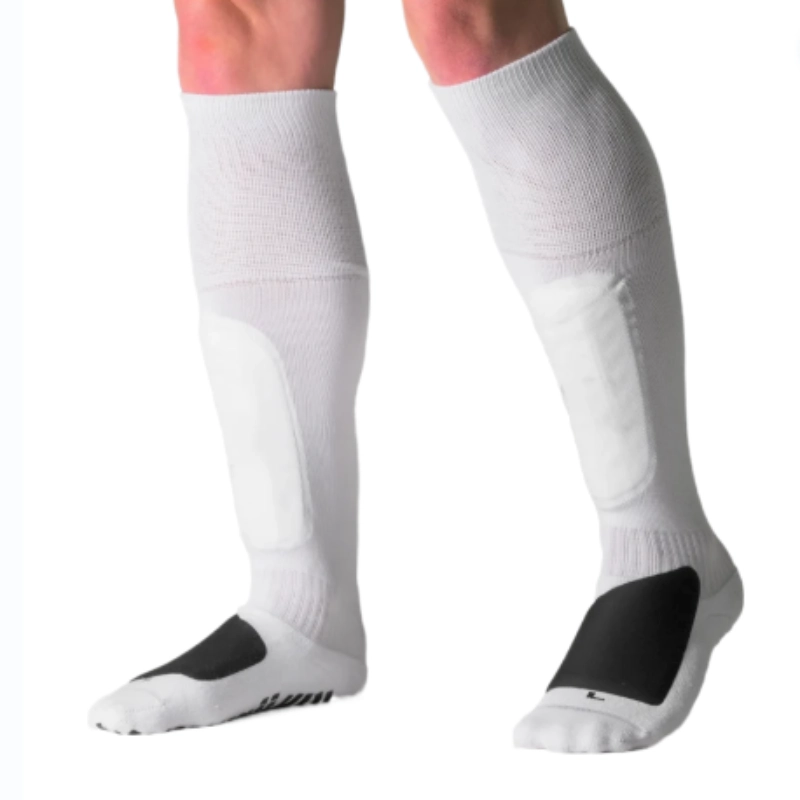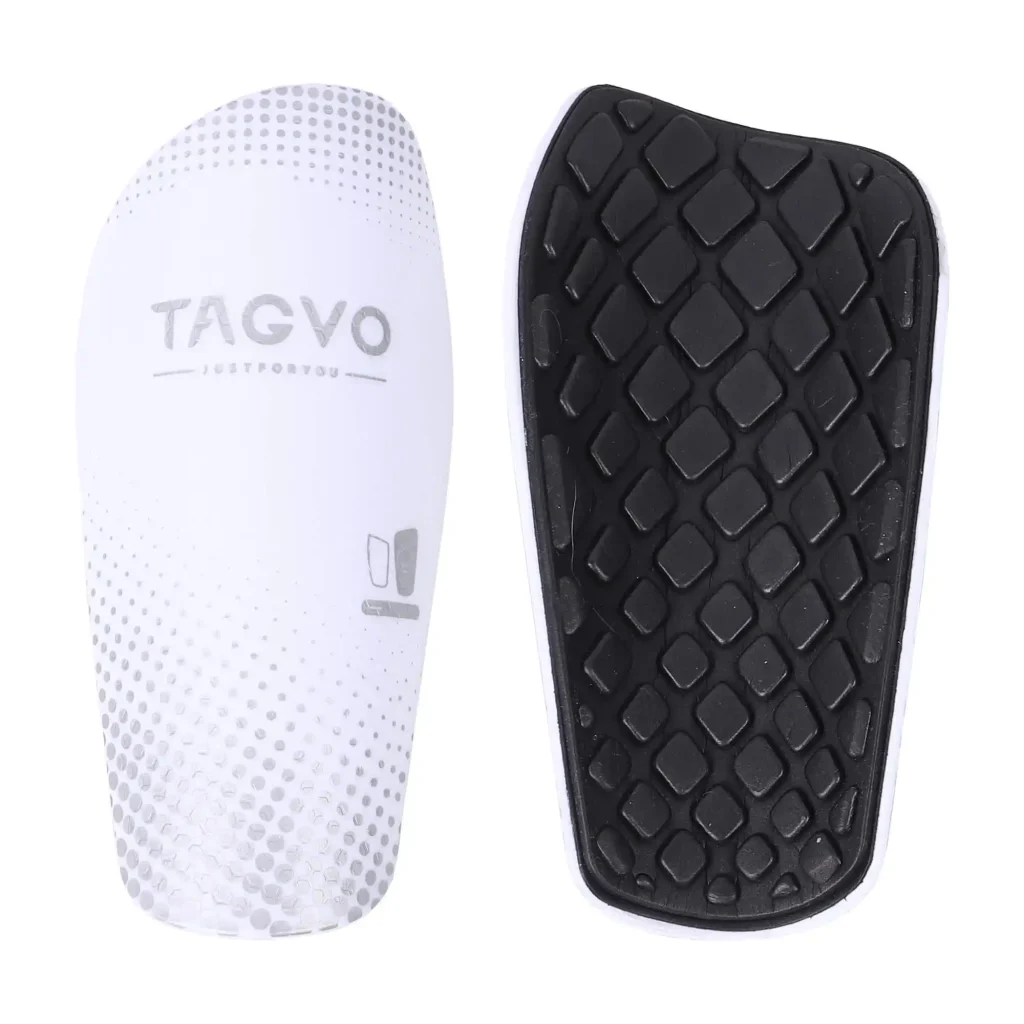Introduction
In the world of sports, particularly in high-contact games like football (soccer), player safety is paramount. One common protective gear worn by athletes is the shin guard, a crucial piece of equipment designed to protect the shins from impacts. However, the placement of shin guards can lead to a debate among players: should they be worn over or under socks? This blog explores the implications of each choice, providing insights into comfort, functionality, and performance during play.

Understanding the Purpose of Shin Guards
The Importance of Protection
Shin guards protect one of the most vulnerable areas in sports, absorbing impacts from falls, tackles, and stray soccer balls. By covering the shins, these guards minimize the risk of fractures and bruises, allowing players to focus on their performance rather than potential injuries.
The Legal Aspect
In many organized sporting events, the use of shin guards is mandatory. Governing bodies, such as FIFA, enforce regulations requiring players to wear them for safety. Understanding these regulations helps players maintain compliance while prioritizing their protection on the pitch.
Different Types of Shin Guards
Shin guards come in various styles, from lightweight options designed for agility to heavier models that offer more substantial protection. Some are equipped with customizable features that can improve player comfort and fit. Choosing the right type based on the player’s position and level of play is crucial for maximizing effectiveness during matches.
Shin Guards Under Socks: Pros and Cons
Enhanced Comfort
Wearing shin guards under socks is common among players who prioritize comfort. The socks create a cushioning layer that can reduce friction, preventing discomfort during movement. Additionally, this placement often provides a more streamlined appearance, avoiding any bulk around the ankle area.
Improved Stability
When shin guards are worn underneath, they tend to stay in place more effectively. The compression effect of tight-fitting socks can help secure the shin guard against the leg, minimizing movement during play. This stability is especially beneficial during quick sprints and sharp turns on the pitch.
Potential Disadvantages
On the downside, wearing shin guards under socks can lead to a risk of slippage. Some socks may not provide enough grip to keep the guard in place, especially in wet conditions. This can create distractions for players, as they may need to adjust their guards during the game, disrupting concentration and performance.
Shin Guards Over Socks: Pros and Cons
Enhanced Visibility
Wearing shin guards over socks is a practice some players prefer for visibility reasons. This placement allows for easy identification and quick inspections, making it easier for referees to ensure compliance during matches. Moreover, this can create a more unique style, giving players the option to showcase their individualized look on the field.
Convenience
Wearing shin guards over socks allows for easy removal and adjustment when needed. Players can quickly change or reposition their guards without the need to roll down their socks, which can save valuable time, especially during intense gameplay situations.
Risk of Slippage
The main drawback of wearing shin guards over socks is the increased likelihood of slipping. Some shin guards may not grip well to the fabric of the socks, which could lead to shifting and compromise protection during play. This potential distraction can impact performance, as players may find themselves preoccupied with ensuring their guards remain in place.
Factors to Consider When Choosing Placement
Type of Sport
The type of sport being played can significantly influence the choice of placement. In sports where tackles and impacts are common, extra caution might warrant wearing shin guards under socks for better stability. In contrast, less intense sports might not necessitate such concerns, allowing players to choose based on personal preference.
Personal Preference
Ultimately, personal comfort plays a critical role in deciding whether to wear shin guards over or under socks. Players should take the time to try both methods to determine which setup allows them to focus more effectively on their game without discomfort or distraction.
Season and Conditions
Weather conditions can also impact this decision. For instance, during warm weather, players may prefer wearing shin guards over socks to stay cooler. Conversely, in colder conditions, wearing them under socks can provide an additional layer of warmth and protection.
Maintenance of Shin Guards
Cleaning and Care
Maintaining shin guards is essential for prolonging their life and effectiveness. Regular cleaning is necessary, especially after games where they might have come into contact with dirt and sweat. Players should typically wipe down their guards with a damp cloth and allow them to air-dry away from direct sunlight or heat sources 5.
Checking for Damage
Players should regularly inspect their shin guards for signs of wear or damage. Cracks, bends, or excessive wear can compromise their protective capabilities. If any issues are identified, it’s crucial to replace the guards to ensure maximum protection during play.
Storing Properly
Proper storage of shin guards is also important. Keeping them in a well-ventilated area allows any moisture to evaporate, preventing the buildup of odors and bacteria. Ideally, shin guards should be stored in a breathable bag, away from direct sunlight.
Choosing the Right Shin Guards
Material Considerations
Shin guards are a critical piece of safety equipment in football, and material selection directly impacts both performance and comfort. Players who rely on agility and speed often prefer guards made from EVA foam or thermoplastic polyurethane (TPU), which offer a light feel without compromising shock absorption. On the other hand, defenders or midfielders who face frequent tackles may benefit from carbon fiber or fiberglass options, known for their superior impact resistance. While heavier, these materials provide added protection in high-contact situations, reducing the risk of bruising and fractures.
Size and Fit
A proper fit isn’t just about comfort—it’s about safety. Guards that are too small won’t protect vital areas, while oversized ones can restrict movement or slip during play. The right size should cover the length from just above the ankle to a few inches below the knee. Players should always refer to the manufacturer’s size guide and, if possible, try the guards with their socks and boots on. Some designs even include adjustable sleeves or compression sleeves to help with placement and reduce unwanted shifting during rapid movements.
Finding the Right Style
Shin guards typically fall into three categories: slip-in, ankle-guarded, and strap-based. Slip-in models are lightweight and favored by professional players for their minimal feel and compatibility with tight-fitting socks. Ankle-guarded designs include foam padding around the ankle for added protection, making them ideal for younger players or those recovering from minor injuries. Strap-on shin guards combine stability and flexibility, allowing players to fine-tune the fit. Choosing the right style often comes down to position, personal preference, and how much freedom of movement the player wants during matches.
| Type of Player | Recommended Material | Style Preference | Key Benefit |
|---|---|---|---|
| Speed-focused winger | EVA foam or TPU | Slip-in | Lightweight, minimal restriction |
| Defensive player | Carbon fiber or fiberglass | Strap-based | High impact protection |
| Midfielder | Composite blends | Ankle-guarded | Balance of agility and protection |
| Youth/Beginner | Dense foam with ankle pad | Ankle-guarded with strap | Extra stability, full coverage |
The Psychological Aspect of Wearing Shin Guards
Enhancing Confidence
Shin guards do more than protect the legs—they protect the mind. For many players, especially young athletes, the fear of injury can limit performance. When a player knows their shins are shielded from kicks, tackles, or accidental studs, they play more freely. This extra layer of safety helps them focus on strategy, ball control, and communication without hesitation. Confidence born from protection often leads to more assertive tackles, quicker footwork, and better positional awareness. It’s not just a mental comfort—it changes how players engage physically.
The Role of Familiarity
Athletes are creatures of habit. Many players develop specific rituals around their shin guards—how they’re worn, taped, or positioned under socks. This familiarity contributes to mental readiness. A player who feels “off” because their gear isn’t right may become distracted or uneasy. Shin guards worn consistently provide a tactile sense of preparedness. Just like a striker feels more focused wearing their favorite boots, a defender may feel grounded and balanced when their shin guards fit just right. Over time, this routine becomes part of their mental preparation before every match.
Community Insights
Locker room conversations or group chats often include talk of gear. Players naturally exchange tips—on fit, comfort, or even new technologies. Discussing shin guards may seem minor, but it fosters a sense of community and shared learning. Some may recommend specific models that contour better to the leg; others might share taping methods that prevent slippage. This peer-to-peer learning reinforces the idea that proper protection is part of becoming a smarter, more prepared athlete—not just physically but mentally too. Teams that normalize these discussions often build stronger player confidence from the ground up.
The Impact of Shin Guard Placement on Player Performance
Mobility and Agility

One of the key aspects that can influence a player’s performance is mobility. The placement of shin guards—whether worn over or under socks—can have a direct impact on how freely players can move. Wearing shin guards under socks often allows for a more streamlined feel, facilitating quick movements and allowing for agility on the field. However, this can vary based on personal preferences and the type of shin guards being used.
Balance and Coordination
Balance is essential in sports, particularly in football where constant changes in direction occur. The distribution of weight and how shin guards fit into the overall gear can affect a player’s stability. Some players report feeling unbalanced when shin guards slip or shift, which can happen more frequently when worn over socks. By contrast, wearing them securely under socks can help maintain a solid center of gravity.
Psychological Factors
Psychological comfort plays a significant role in athletic performance. Players who feel confident in their gear, including shin guards, can perform better. If players find that shin guards are slipping around their legs, they may become distracted and hesitant during play, potentially affecting their game. Understanding the mental aspect of gear placement can help athletes choose the best method for themselves.
Common Misconceptions About Shin Guards
They Are Just for Protection
While the primary purpose of shin guards is protection, many players overlook their role in enhancing overall performance. Properly fitted shin guards can boost confidence and allow athletes to play with greater intensity without the fear of injury. Understanding that these protective pieces are not just functional accessories can change how players approach their gear.
One Size Fits All
Another common misconception is that one type of shin guard works for everyone. However, the best fit often varies between players depending on their positions, playing styles, and individual body mechanics. Different designs cater to different preferences, emphasizing the importance of trying various styles to find the perfect match for comfort and protection.
They Can Be Worn Irregularly
Some players mistakenly believe that as long as they wear shin guards during matches, the placement and fit do not matter. This is not true, as improper placement or loose fitting can diminish the protective quality of the guards, putting players at risk of injury. Consistency in how they wear and fit their gear is essential.
Recommendations for Optimal Shin Guard Use
Trial and Error for the Best Fit
Players should assess their shin guards for comfort and functionality through trial and error. Trying different placements—over and under socks—can help determine which method offers the best fit, stability, and performance. Engaging in practice sessions while experimenting with both approaches will enable athletes to make informed decisions about their preferred style.
Incorporate Quality Socks
The type of socks worn in conjunction with shin guards can significantly impact their effectiveness. Using high-quality athletic socks designed for moisture-wicking and support can enhance comfort and grip, regardless of whether the shin guards are placed over or under. Investing in the right socks can reduce irritation and improve the overall experience for players.
Seek Professional Advice
For those unsure about the best shin guards or placement strategies, seeking advice from coaches or experienced players can be beneficial. They can provide insights into which styles have been effective for others and can lead to better choices tailored to individual needs.
The Evolution of Shin Guard Technology
Advancements in Materials
The materials used in shin guards have greatly evolved, with modern options featuring lightweight composites designed to provide adequate protection without compromising mobility. Innovations such as breathable fabrics and ergonomically designed shapes have enhanced comfort and functionality, making it easier for players to perform at their best.
Customization Features
Today’s shin guards often come with customizable options, allowing players to adjust fit and padding based on their specific needs. Custom-fit options can enhance stability and ensure the guards remain in optimal positions during play. This flexibility is particularly important for players who have previously struggled to find well-fitting protective gear.
Integration with Other Gear
Modern shin guards are being designed with the possibility of integrating with other gear, such as specialized socks that have a pocket for shin guards. Such innovations may help streamline the setup, eliminating the need to choose between over or under placement. This integration could potentially revolutionize how athletes think about protective gear.
Final Thoughts on Shin Guard Usage
Importance of Comfort and Fit
Ultimately, the comfort and fit of shin guards significantly influence a player’s experience on the field. Whether a player chooses to wear them over or under socks should stem from personal comfort, effectiveness, and how well the arrangement allows them to perform. Recognizing that comfort directly affects performance can empower athletes to invest more time in finding what works best for them.
Persistence in Finding Solutions
Players should be persistent in exploring the best options for wearing shin guards, as this can lead to a more enjoyable and effective sporting experience. Whether through community discussions or personal experimentation, every athlete can find the right system that promotes both safety and optimal gameplay.
Community Engagement and Feedback
Engaging with peers and sharing experiences about shin guard usage can enhance knowledge and improve choices. Whether in practice groups or on social media platforms, players can gather valuable information that can lead to better decisions about protective gear.
Conclusion
In conclusion, the decision of whether to wear shin guards over or under socks is not merely a question of style; it’s a vital choice affecting comfort, safety, and performance on the field. By understanding the functionalities of shin guards, engaging with technological advancements in materials, and valuing personal preference, players can ensure they are adequately protected while performing confidently.

At Max Hosiery, we are committed to providing top-of-the-line socks designed to enhance athletic performance. If you’re looking for custom options that cater to your specific needs, reach out to us today! Let us help you elevate your game with the best gear.
FAQ Section
What is the best placement for shin guards?
The best placement can vary by personal preference; they can be worn over or under socks, depending on comfort and performance.
Do shin guards need to be inspected regularly?
Yes, players should check shin guards for wear and damage regularly to ensure maximum protection during play.
Can wearing shin guards affect performance?
Yes, improper fit or placement can lead to distractions, reduced mobility, and even injuries.
What type of socks should I use with shin guards?
It’s best to use high-quality athletic socks that provide moisture-wicking capabilities and a snug fit to enhance comfort and support.
How often should I replace my shin guards?
Shin guards should be replaced when they show signs of wear, such as cracks or ineffective padding, to maintain optimal protection.
